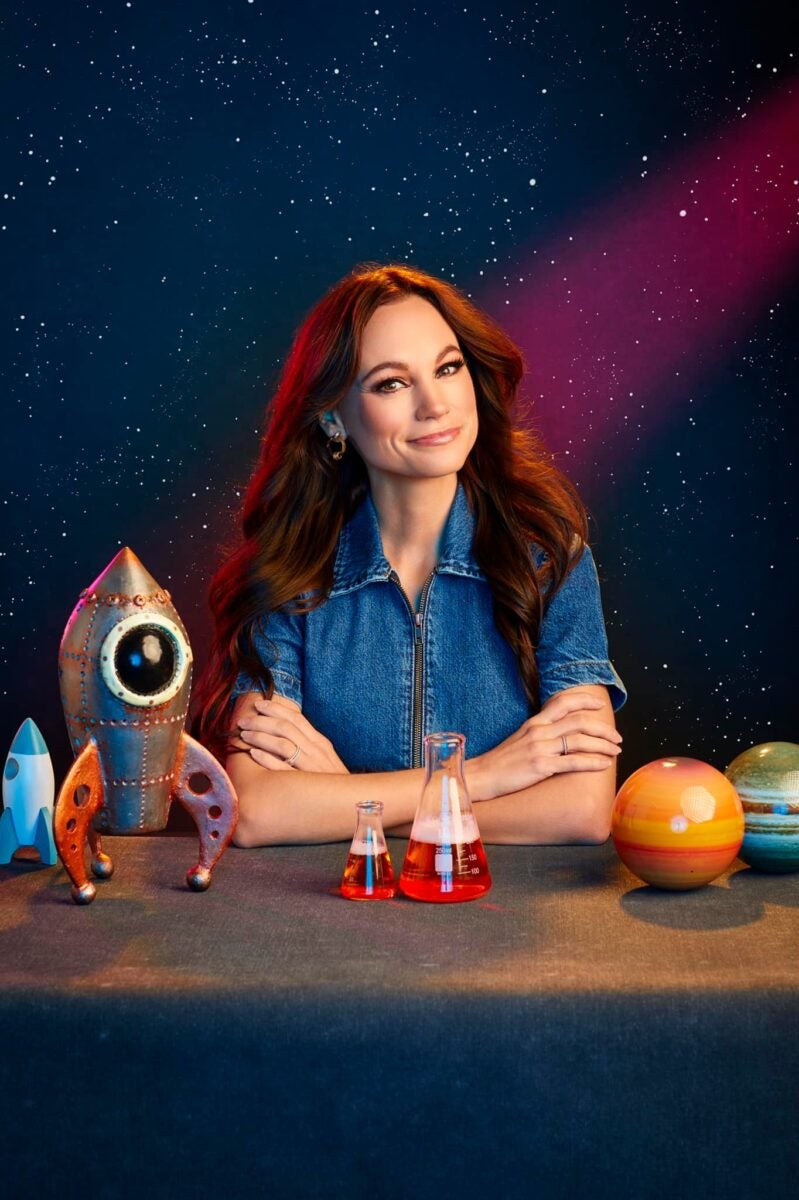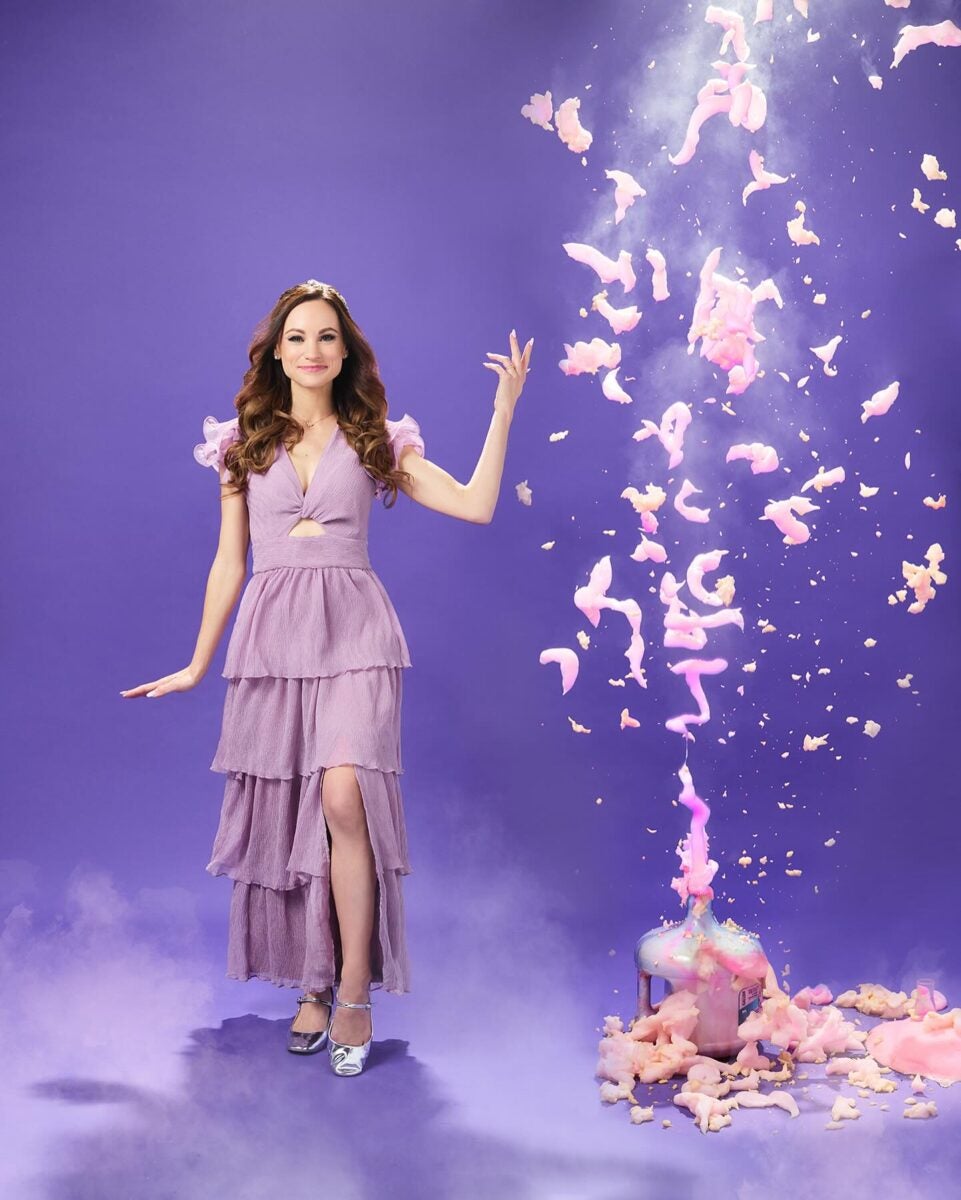
Emily Calandrelli, an MIT engineer, science communicator, host, and Emmy-nominated TV producer, is heading to space.
On July 16, Calandrelli took to social media to announce that she will be launching aboard a Blue Origin craft, a feat that will make her one of the first 100 women in space. Calandrelli’s announcement garnered lots of social media attention from her 3 million followers, and she hopes the flight will inspire young women and girls to reach for the stars.
“I am very excited for this next generation of space exploration because more people with different backgrounds will be able to experience it and share it in their own unique ways with their audience,” Calandrelli tells Astronomy.
Related: Meet Katya Echazarreta, the first Mexican-born woman to travel to space
The spaceflight
It is not yet publicly known when the Blue Origin flight, which is partially sponsored by the nonprofit Wing 2 Wing Foundation, will take place, but it will include Calandrelli and five other crewmates. The foundation has a connection to Marshall University in West Virginia — Calandrelli’s home state. Calandrelli’s flight will also highlight the Marshall For All, Marshall Forever program, designed to help Marshall University students graduate debt-free. Calandrelli champions accessible education due to her own experience of being granted a scholarship that allowed her to excel academically. This later allowed her to go to MIT for her master’s degree. “If I didn’t have my tuition covered, none of that would be possible. And so, I’m a huge advocate for accessible education,” Calandrelli says.
One of the items Calandrelli is taking with her on her flight is her father’s college class ring. Her father, Brad Calandrelli, was the first in his family to attend college, inspiring Calandrelli’s career path. He grew up in poverty but through perseverance and tenacity, he built a better home for his family, she says. As a senior in high school, Calandrelli watched her father work tirelessly. She searched for the highest-paying career to major in: it was engineering. “Once I was there, I fell in love with it.”
To further fund the flight, Calandrelli has also partnered with Space for Humanity as a Citizen Astronaut Program Ambassador. Her excursion will also highlight science communication and women in STEM (which stands for science, technology, engineering and mathematics).
Communicating science
When creating messages about science, Calandrelli pays attention to what she wears and how she presents herself. In Calandrelli’s Emmy-nominated show, Netflix’s Emily’s Wonderlab, she wears pink overalls. Her social media posts on TikTok feature pastel-colored dresses and bright makeup. “When I was the host of Xploration Outer Space, I would wear these all-black, monochrome-type outfits, because I thought that would help me be taken more seriously. I was just very nervous about the fact that I’m a woman in STEM. I’m already a little bit of an outlier, and I didn’t want to draw attention to that fact,” Calandrelli says.
The more confidence Calandrelli gained in embracing her true self and expertise, the more feminine the outfits became. “Now, when I go out to book signings or do speeches, I wear something feminine and frilly and pink and sparkly, and it’s because that makes me happy. I also see how little kids, especially little girls, look at me when I do these science experiments in a frilly dress,” Calandrelli says. Over the years, her messaging has focused on inspiring children to find the fun in science and pursue it as a career.

However, Calandrelli has struggled with funding her science-themed shows. “[Hollywood executives] see women hosting science shows as a very niche thing that boys and men wouldn’t want to see, and so I have tried and failed many times to pitch science shows with myself as the host,” says Calandrelli. The feedback she gets from executives is that most people who watch such shows are boys and men. So, shows with a female host, especially with a STEM theme, are considered a financial risk. “It’s so disappointing because I have people and families who would just die for more Emily’s Wonderlab, but for the life of us, we can’t find anybody to fund it,” Calandrelli says.
She adds that leaning into the human aspect of science and not shying away from getting emotional is key for those who want to get into the science communication field.
Calandrelli’s next step, after her trip to space, is to work on a book for adults. The book will be a collection of stories that she wishes she had when she first went to college, first became a mother, and her thoughts about life at this stage in her career. Calandrelli described it as a “feminist manifesto” with science stories mixed in.
“[Women] can exist in so many different emotions, interests, and identities, and just trying to find a way to embrace all of those and not be sectioned off into one box, I think, is really important,” she says.









